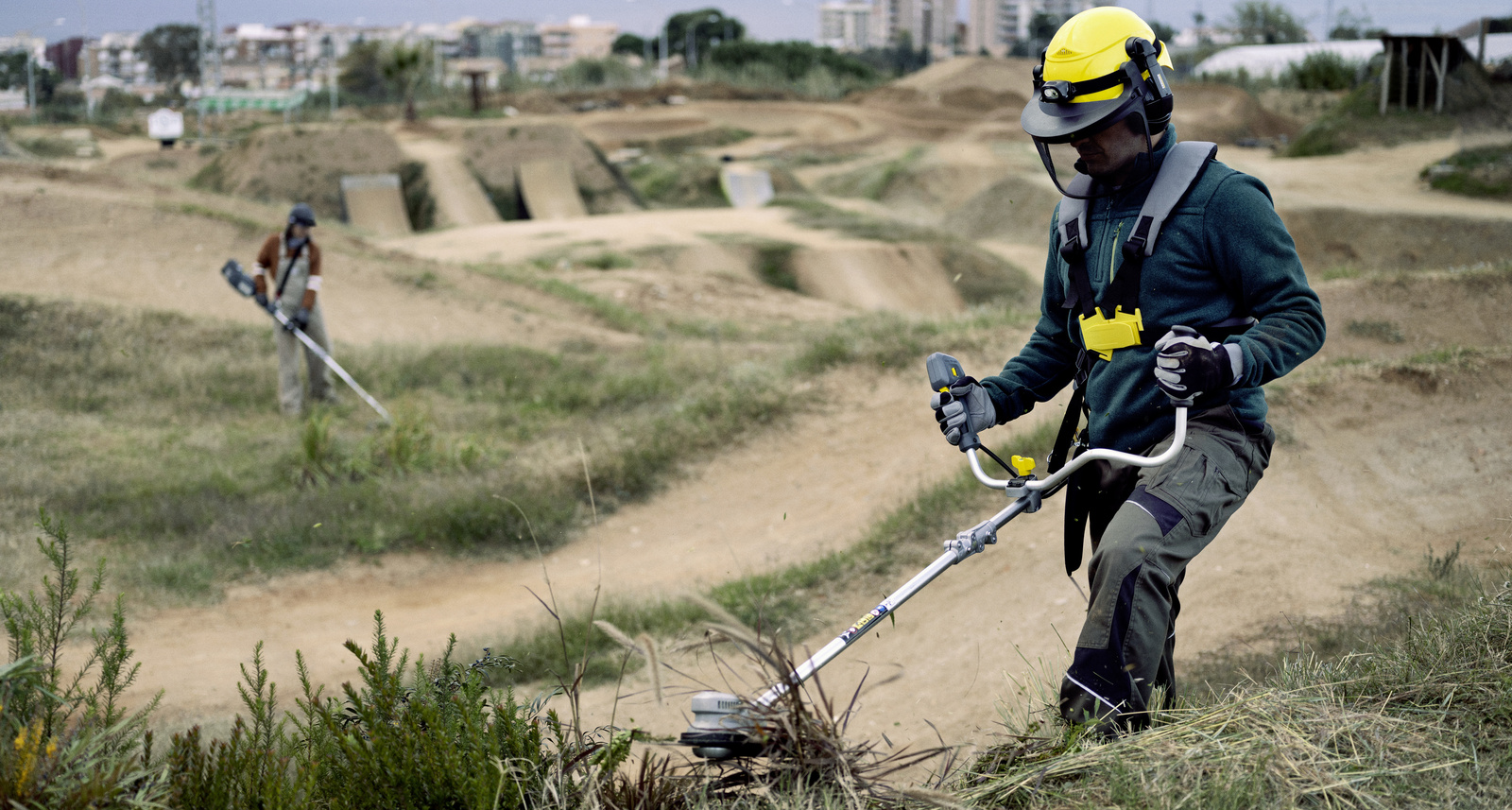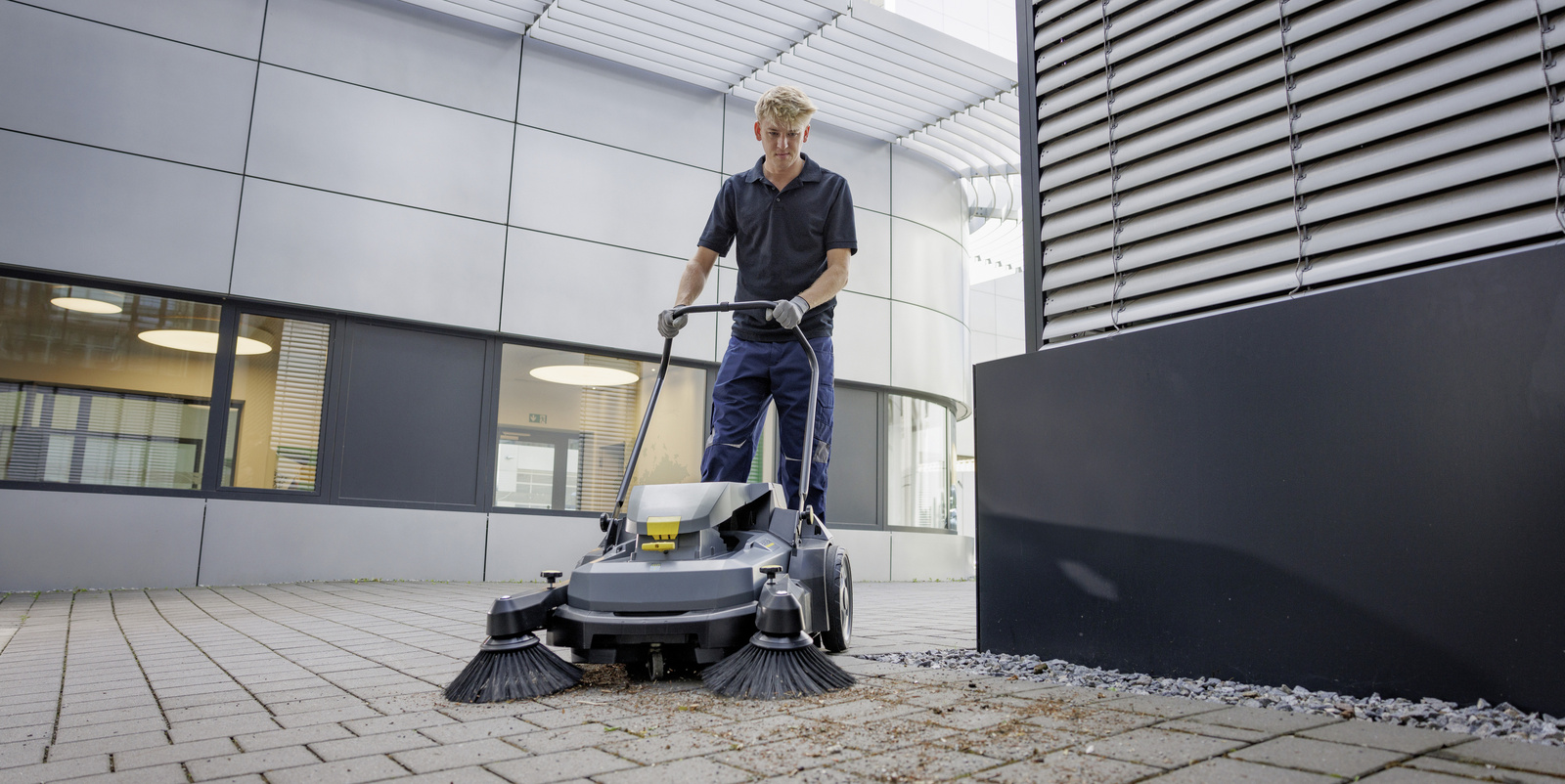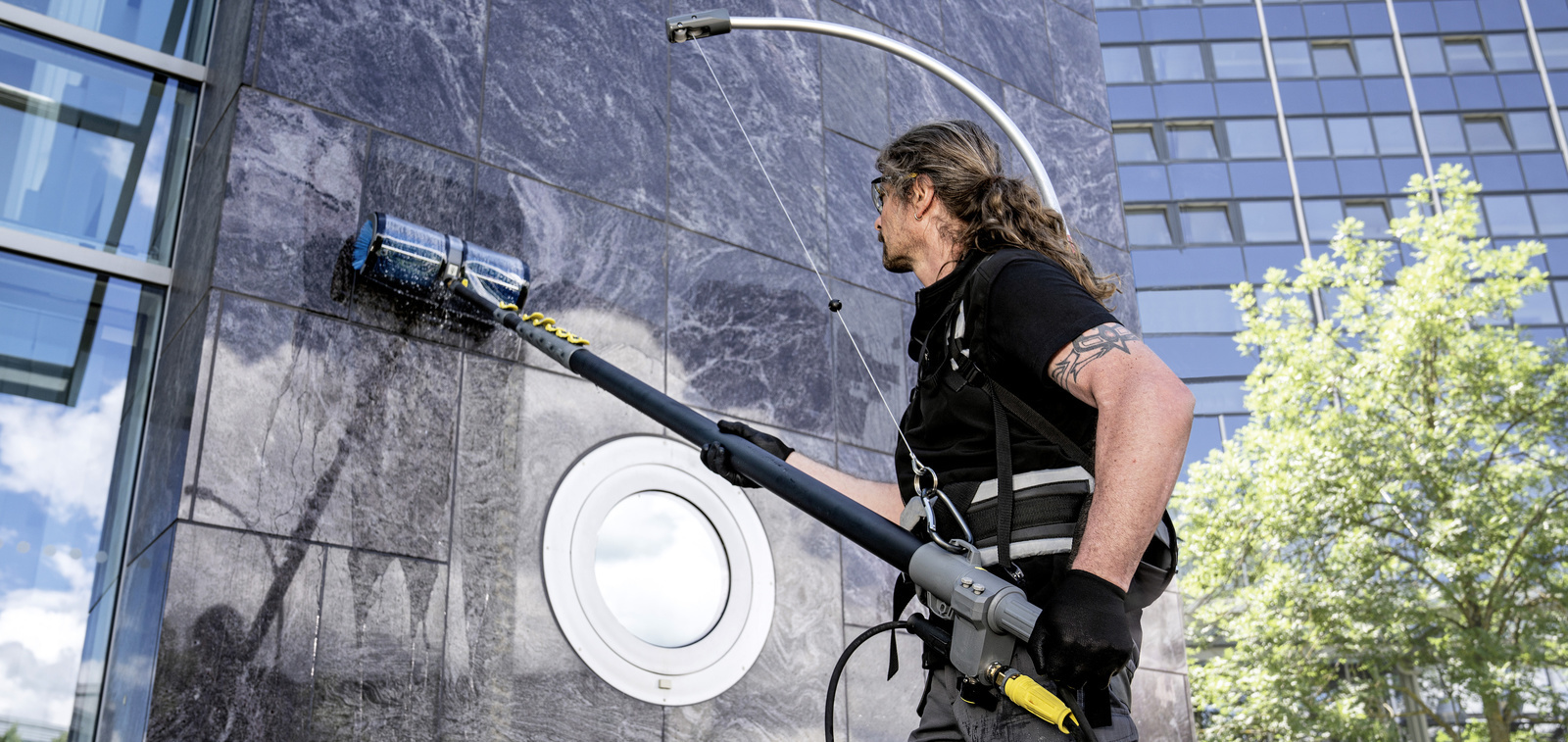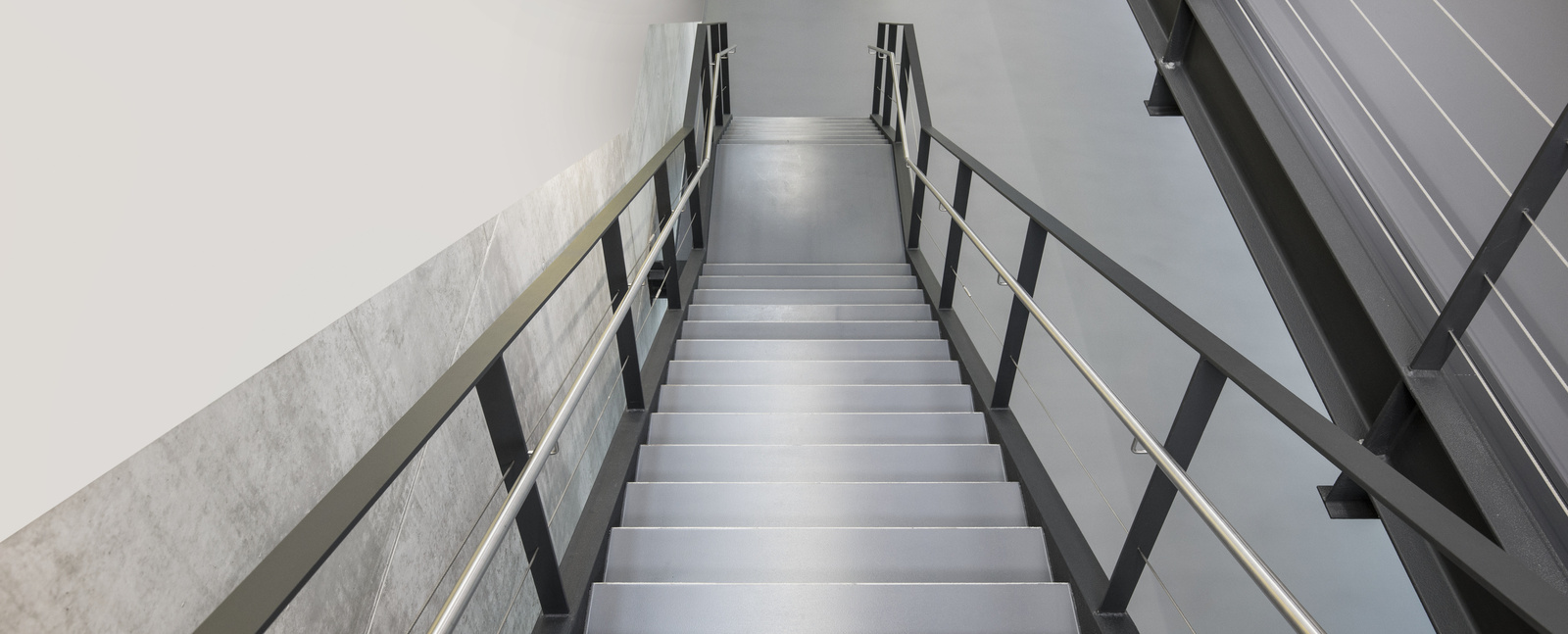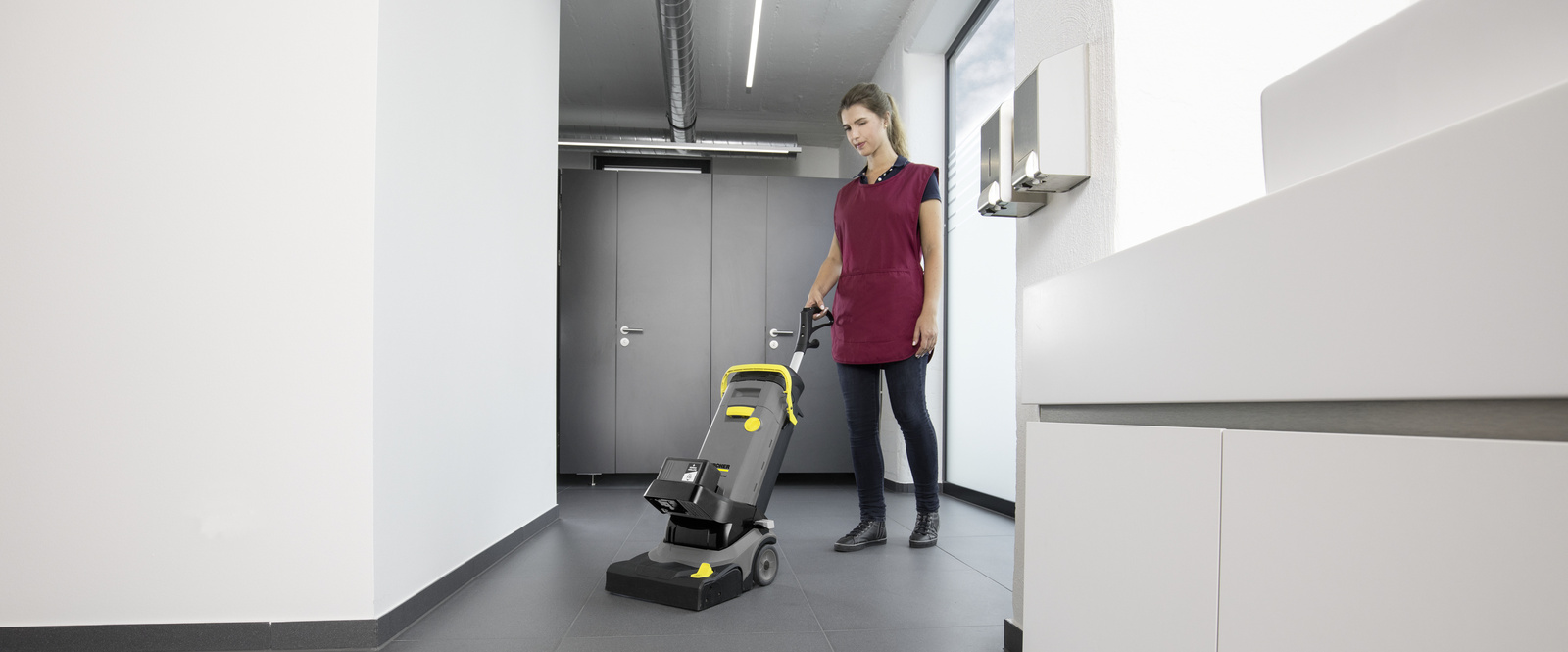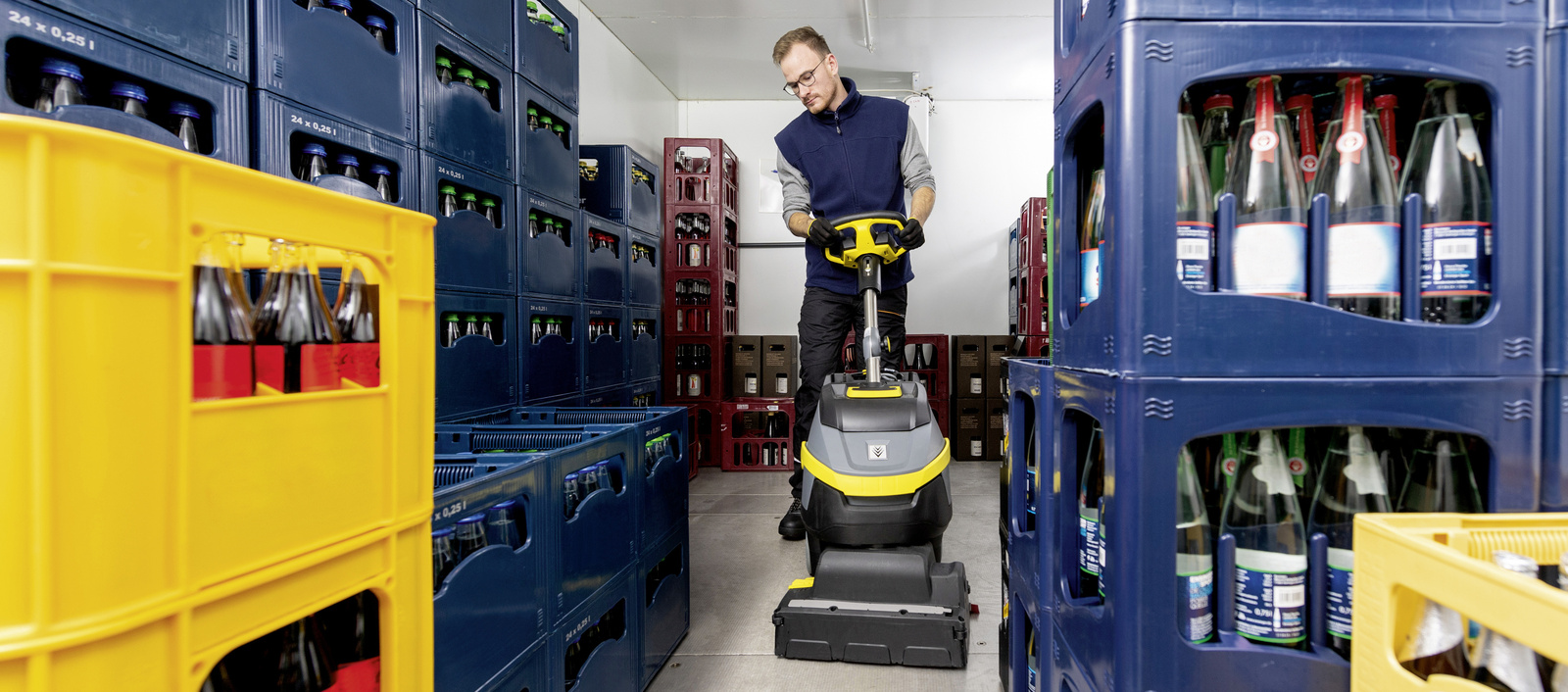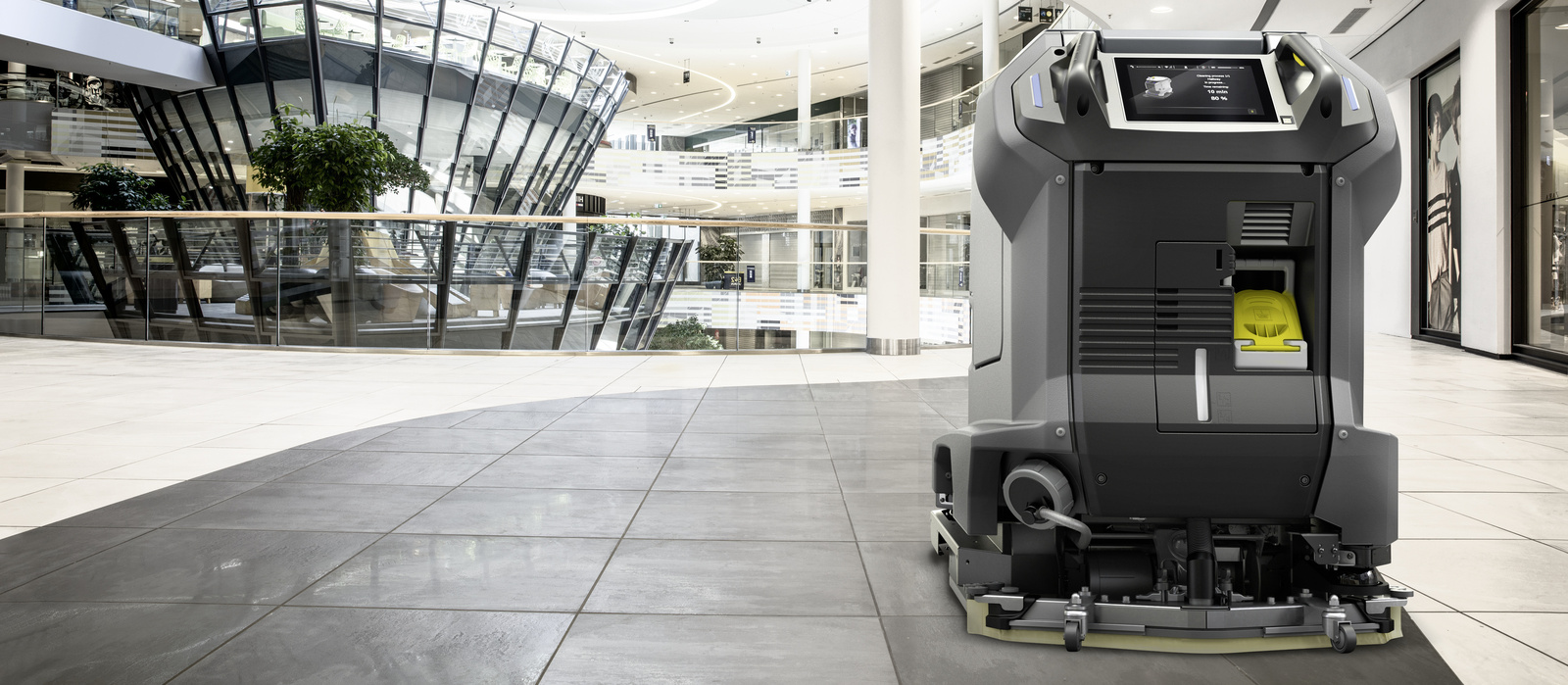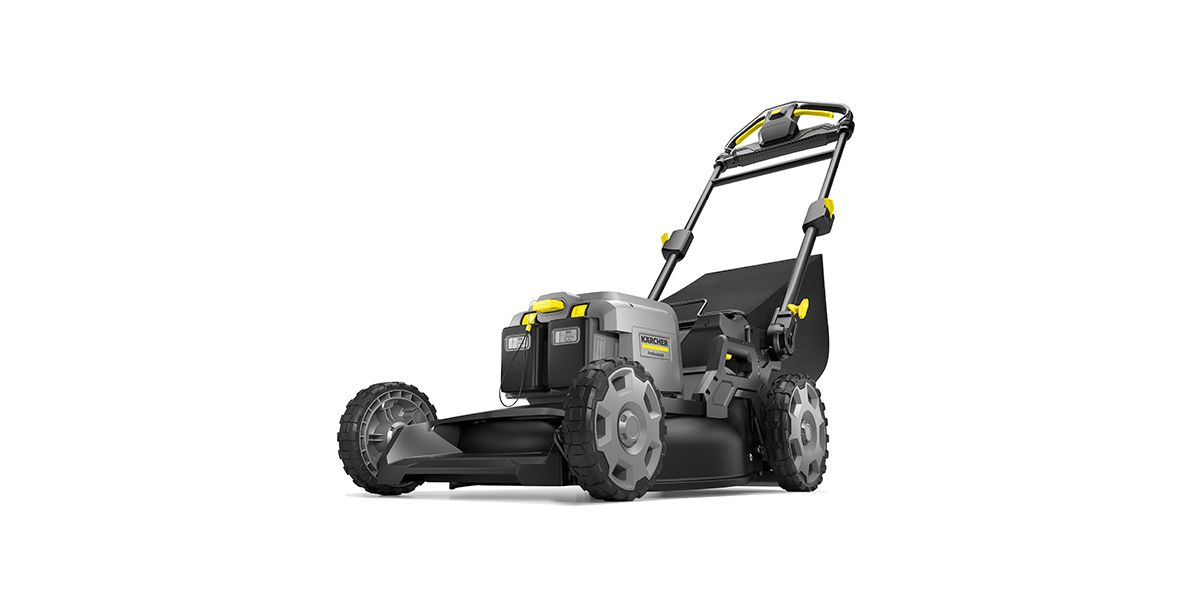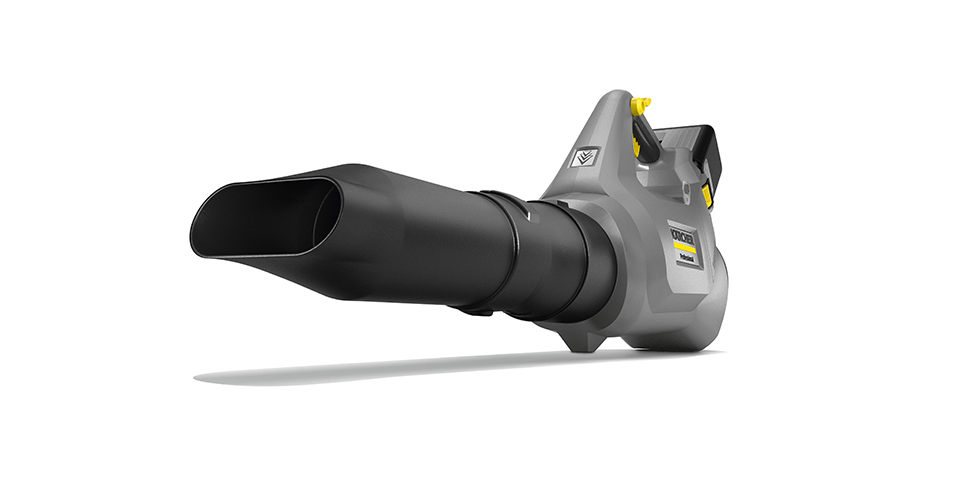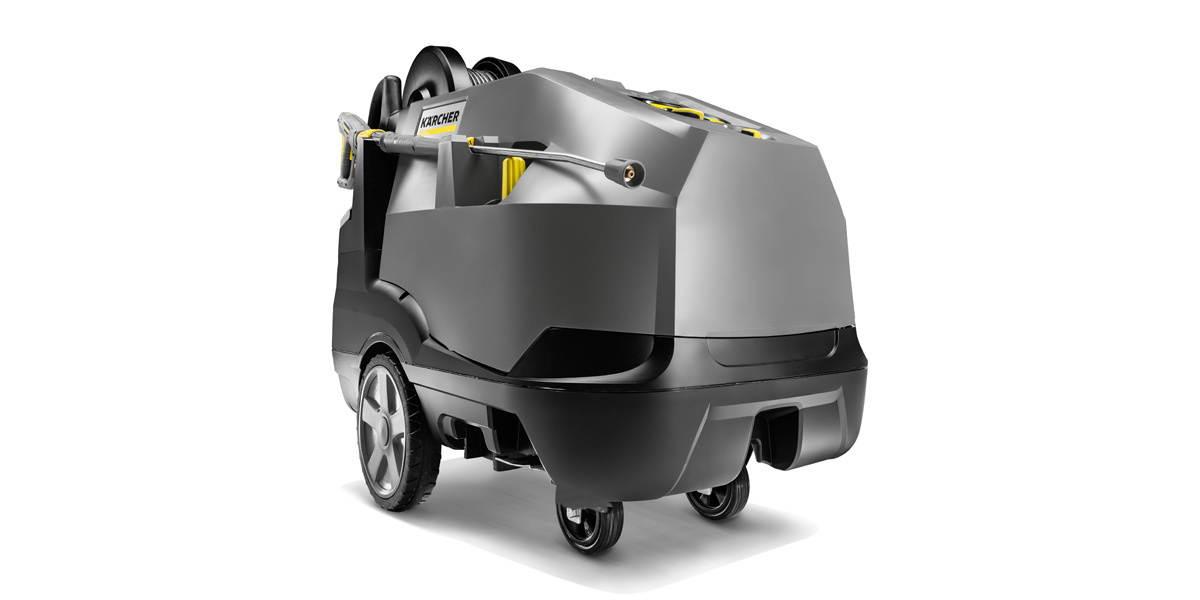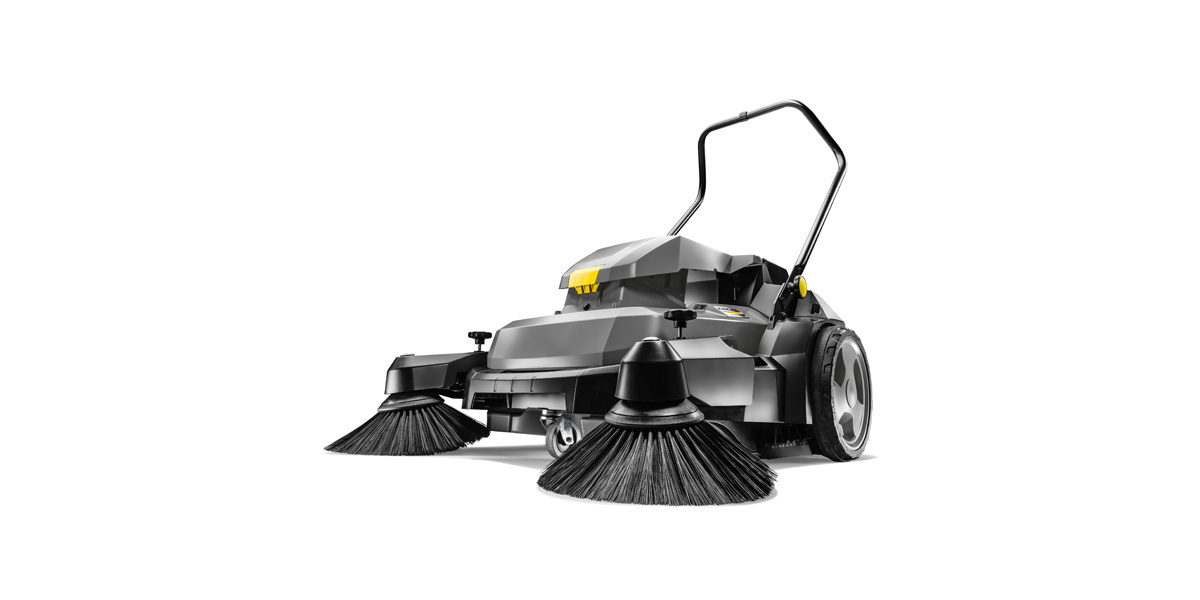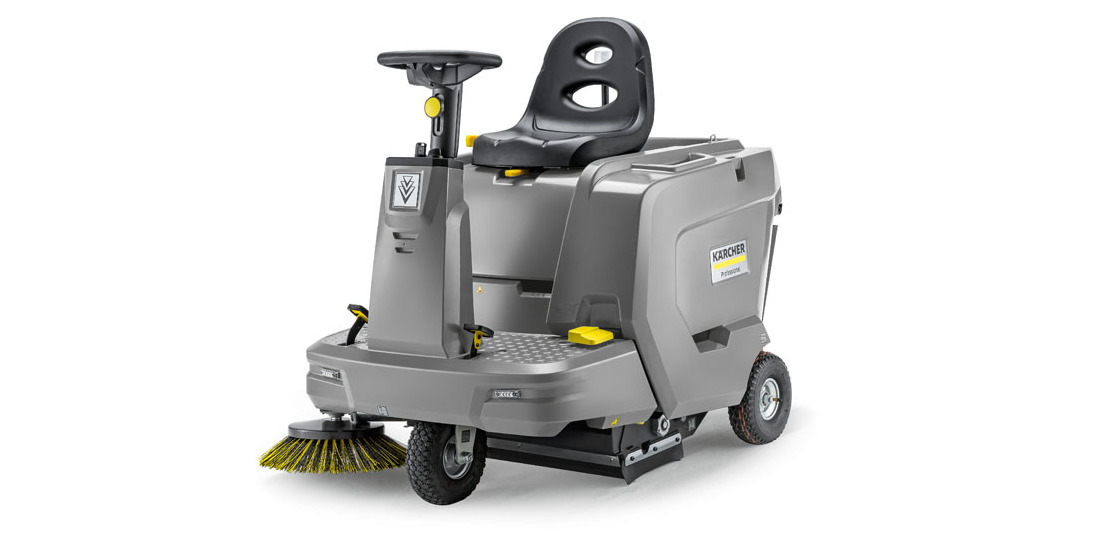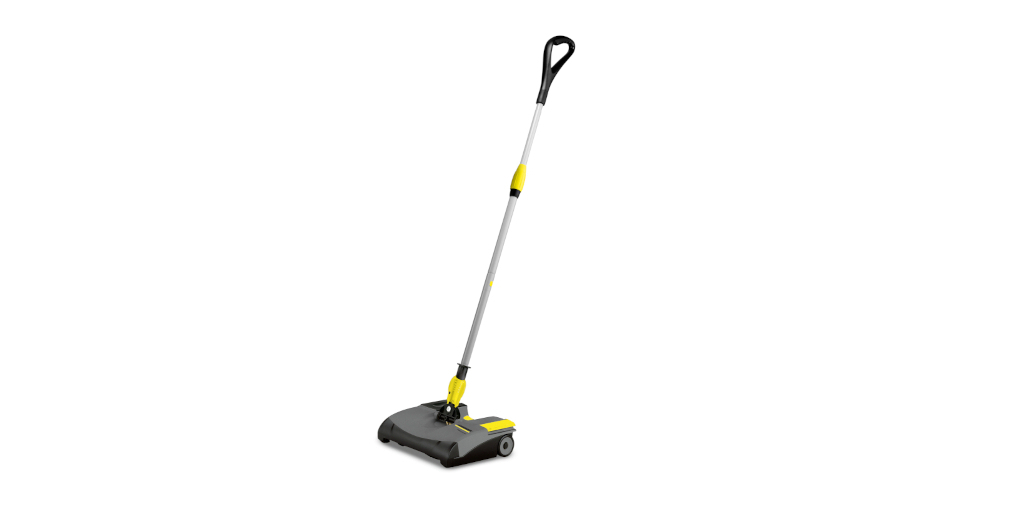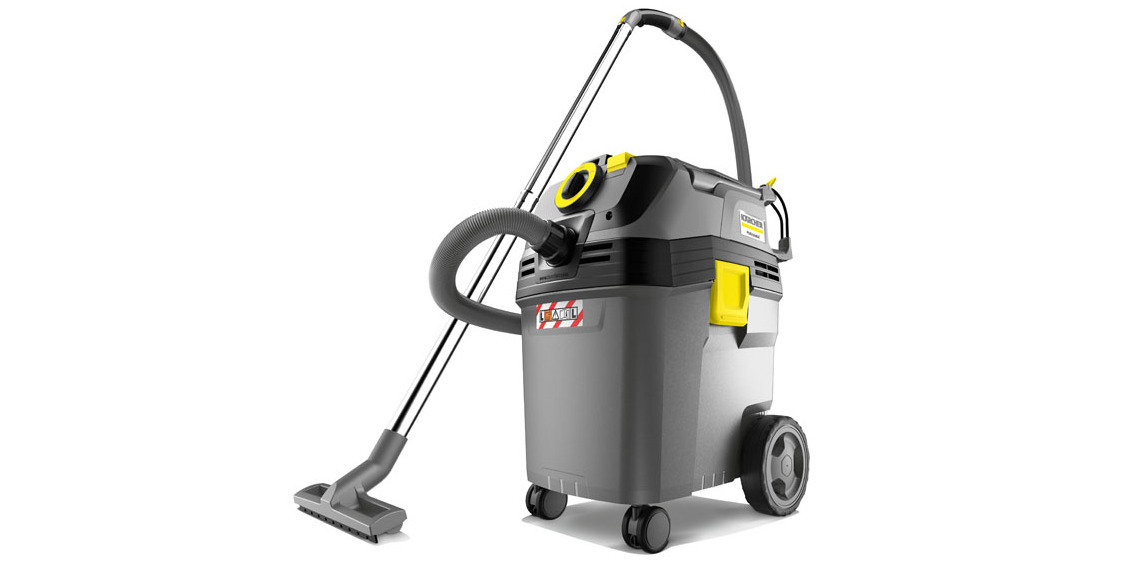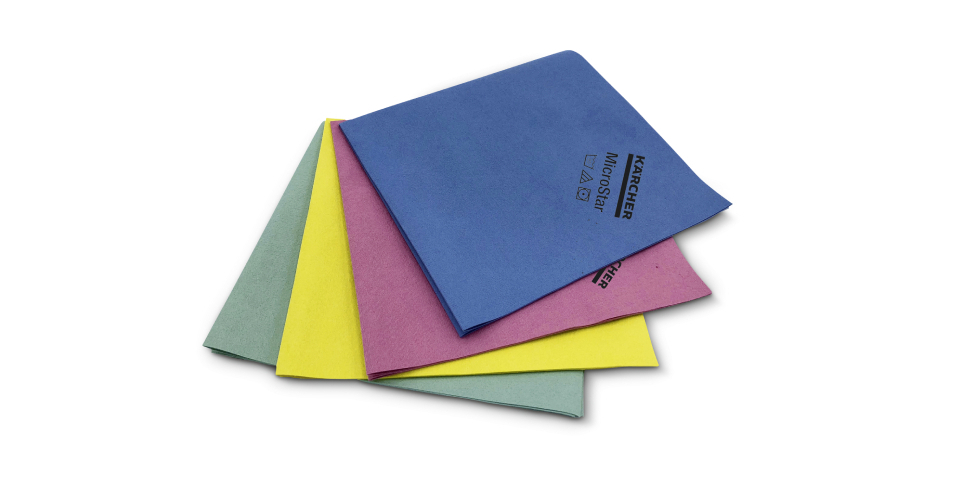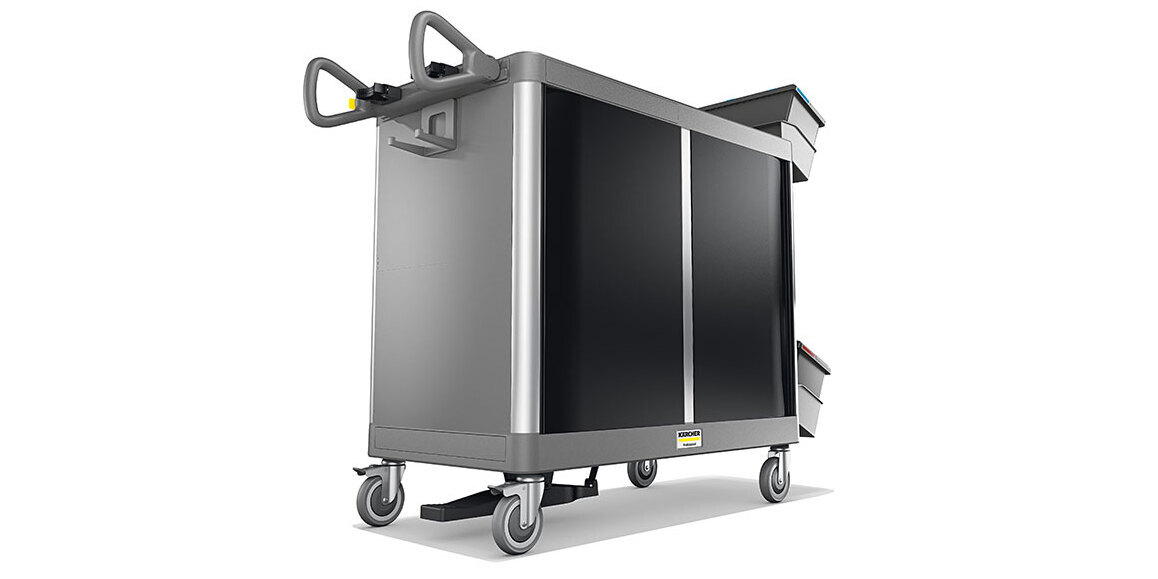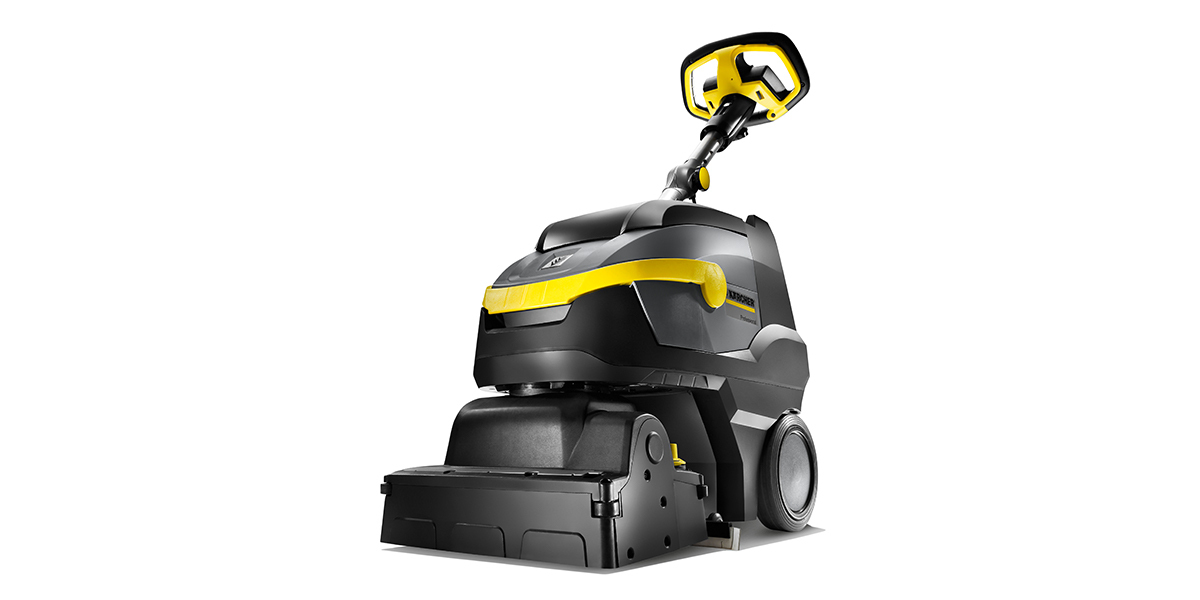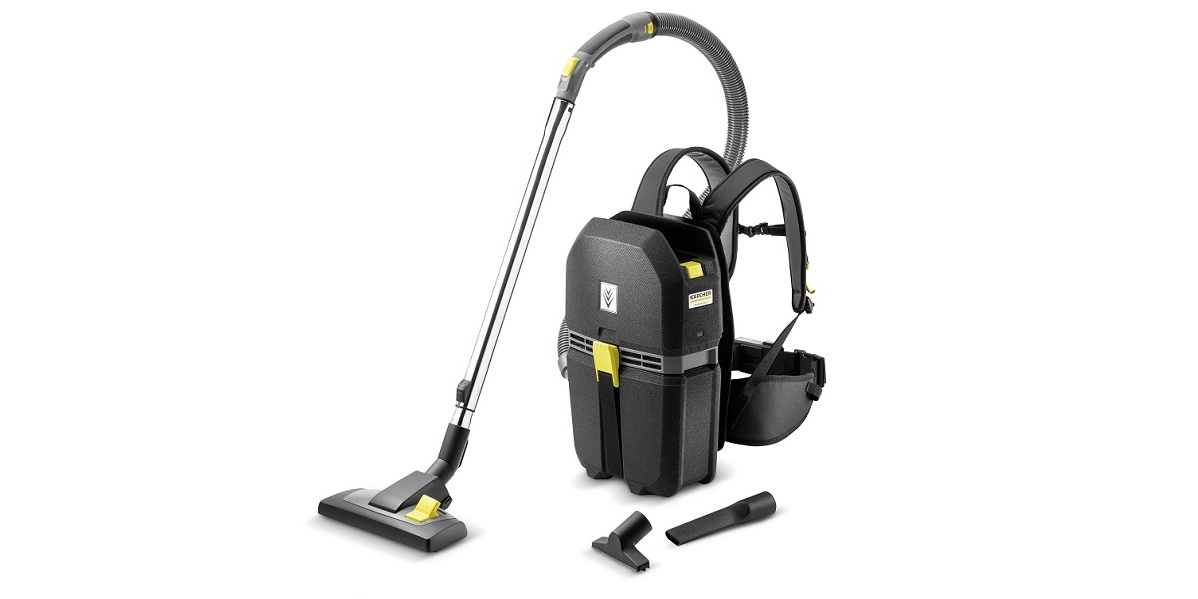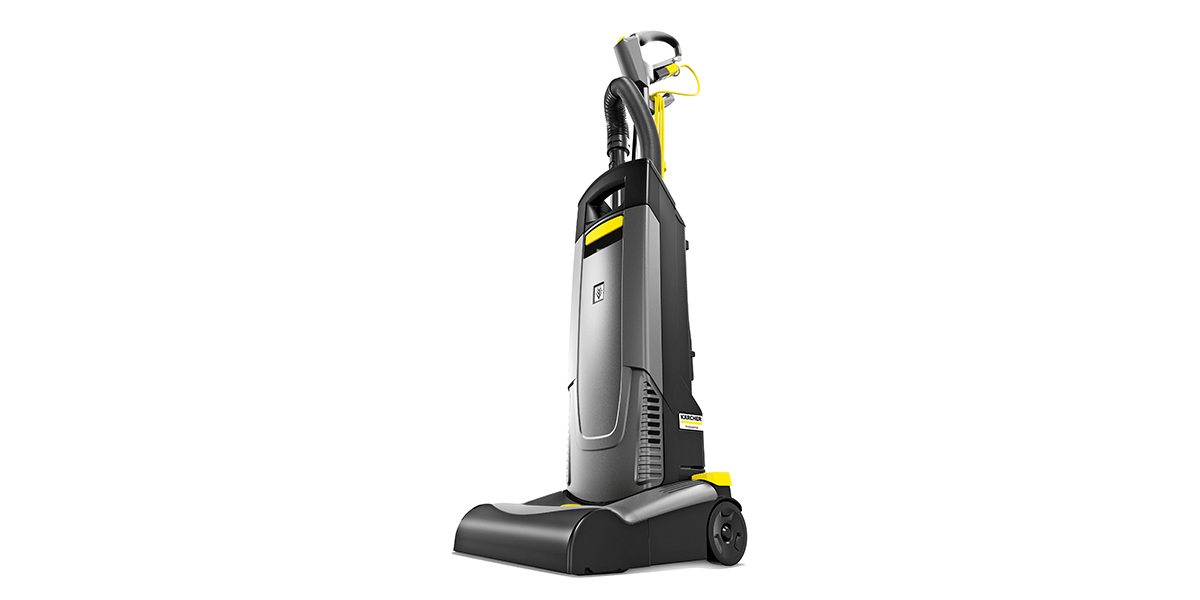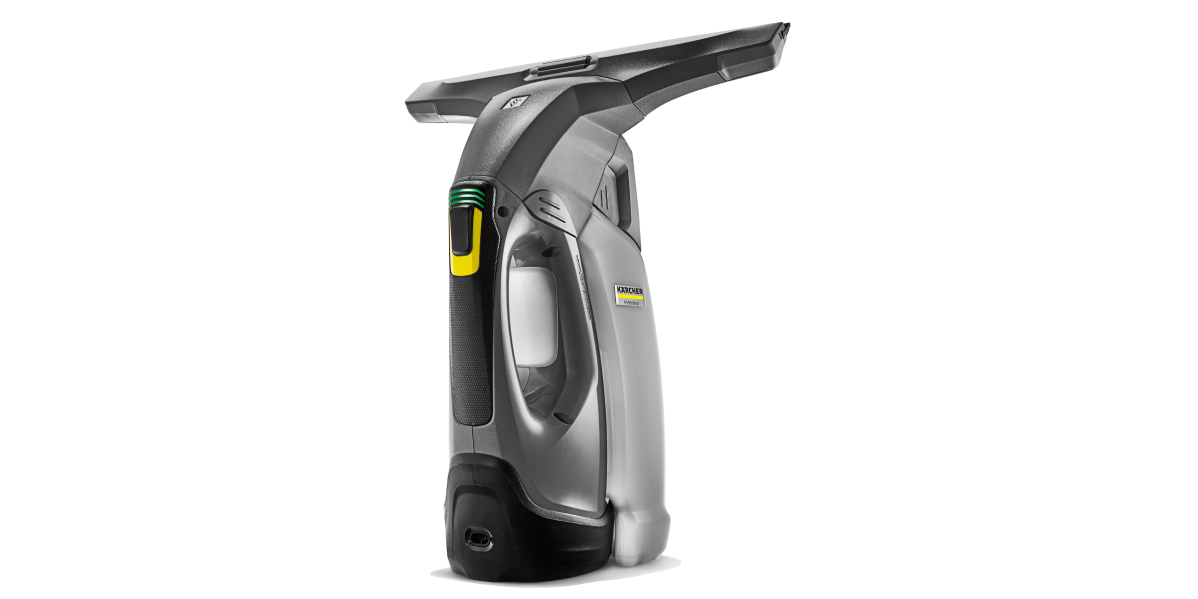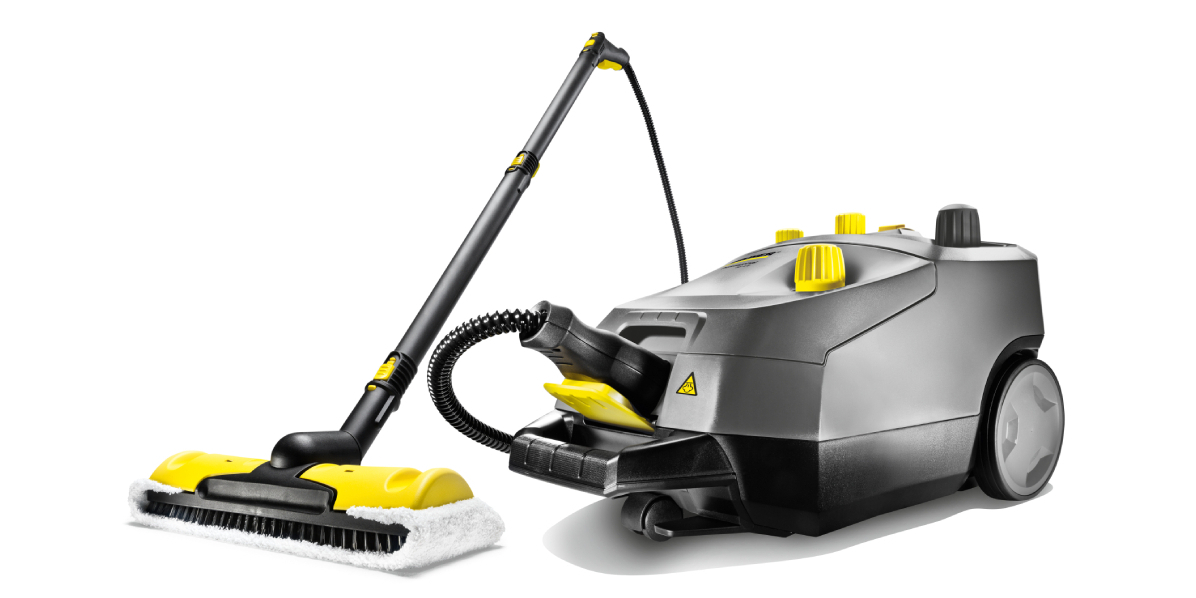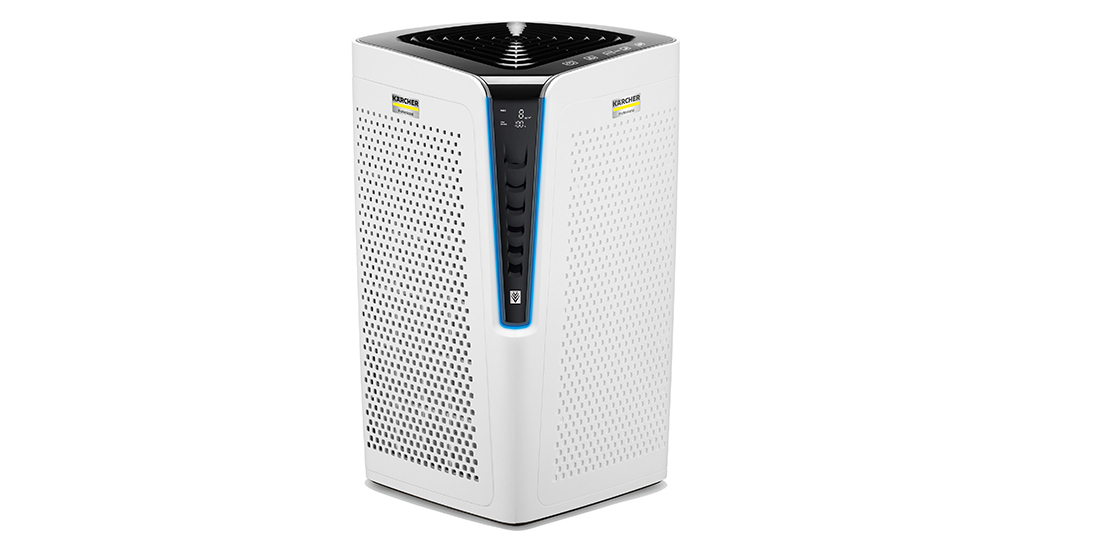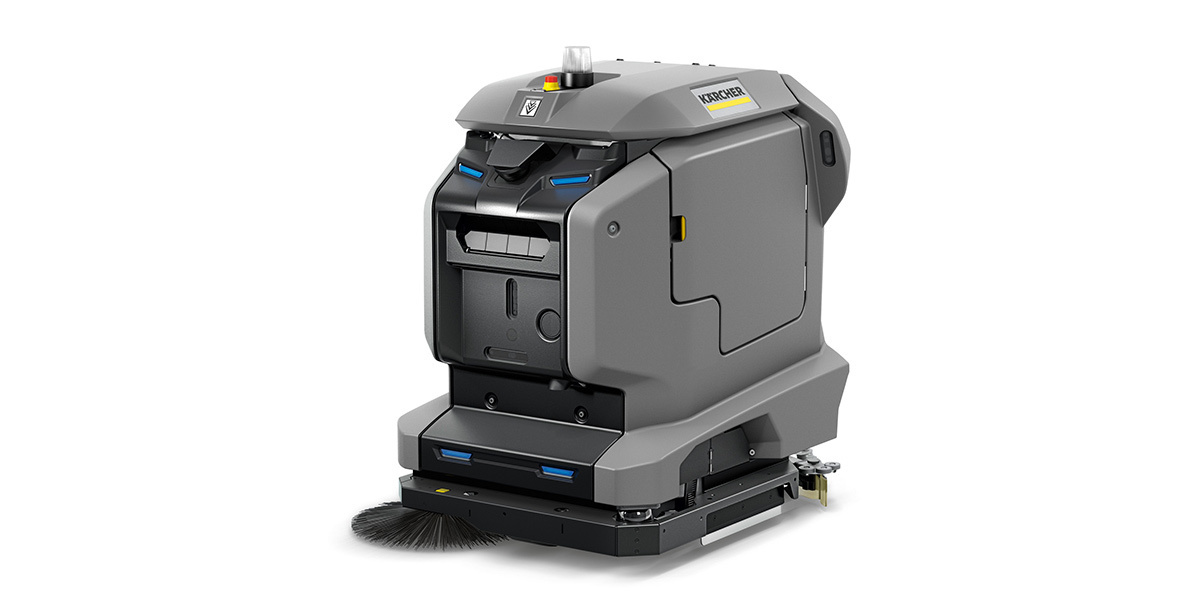Cleaning hotels efficiently
Cleanliness is fundamental to ensuring hotel guests are satisfied and happy to return. General awareness surrounding hygiene in hotels has increased in recent years, and the expected standards of cleanliness and hygiene in hotels have risen significantly. Parallel to this, the hotel industry is struggling with a shortage of skilled labour combined with time and cost pressures. Cleaning a hotel is a mammoth task: from the outside area to the reception desk and all the way to the floor in the spa area, every inch has to be cleaned. Carefully considered cleaning methods and suitable technology are required to make work as efficient as possible and to reduce the strain on staff. Which concepts further reduce the cleaning workload and what role can cleaning robots play?
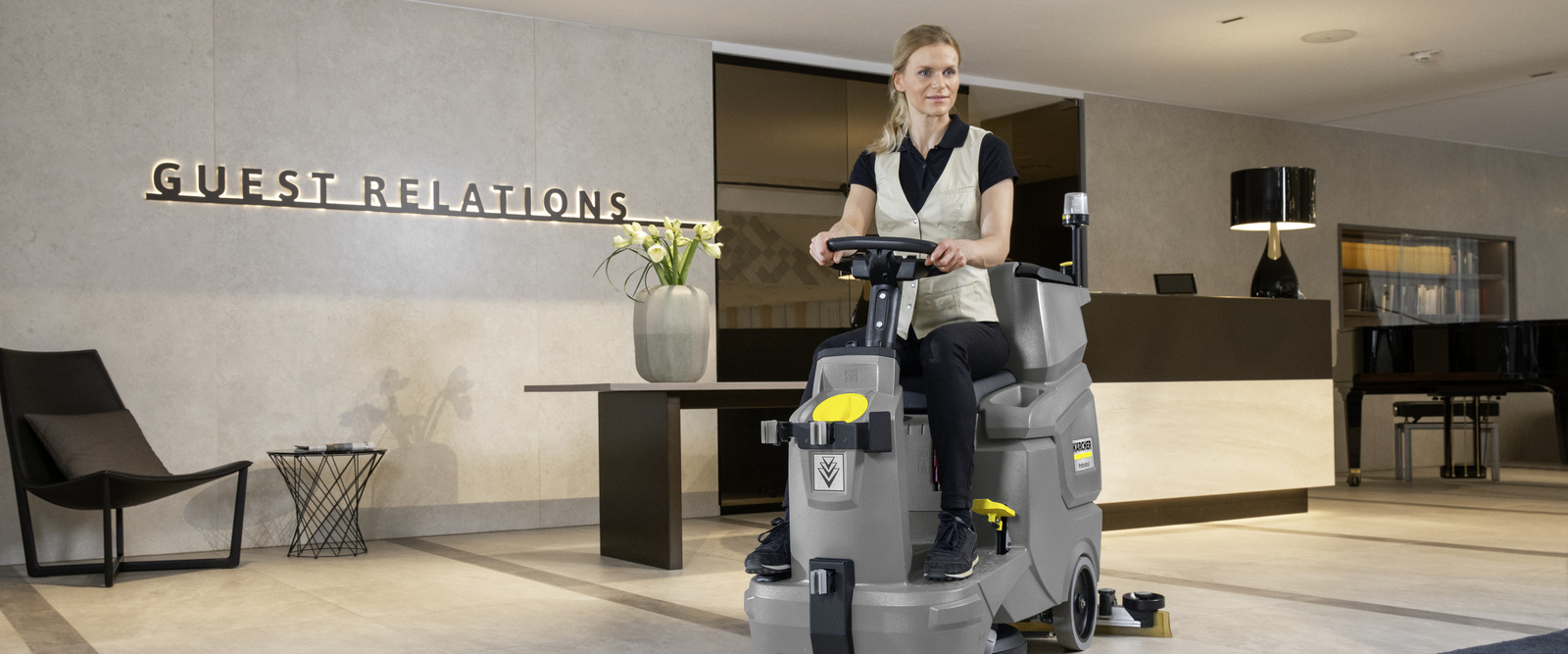
Cleaning hotels efficiently
The outside area is the hotel's calling card. Well-maintained green spaces, facades and entrance areas are not only inviting, they also help to reduce the amount of dirt entering the building in the first place. This, in turn, reduces the amount of cleaning required indoors.
Keeping green spaces looking their best: from lawn mowers to brush cutters
When it comes to lawn mowing, it is important to choose the right mower on the basis of various criteria. The basic unit should have a collecting bag, and additionally there should be a mulching function and a side or rear discharge. A model with a traction drive on both sides is particularly useful to keep tracking straight on slopes and uneven surfaces. Machines with central cutting height adjustment are a versatile option. To reduce the physical strain on the user and facilitate ergonomic working, the machine should run as quietly as possible and with as little vibration as possible.
Brush cutters with blades easily remove undergrowth or taller grass and can also be used for mowing on steep slopes. Cutting blades sharpened on both sides allow the blade to be turned and therefore have a longer service life. For intricate work around trees, columns, sculptures, etc., machines with a trimmer head are recommended, since the trimmer line prevents damage to the blades or to the obstacles themselves. An ergonomic handle position is important to encourage good posture. Models of a lightweight aluminium construction are robust despite their low weight, taking the strain out of longer periods of use.
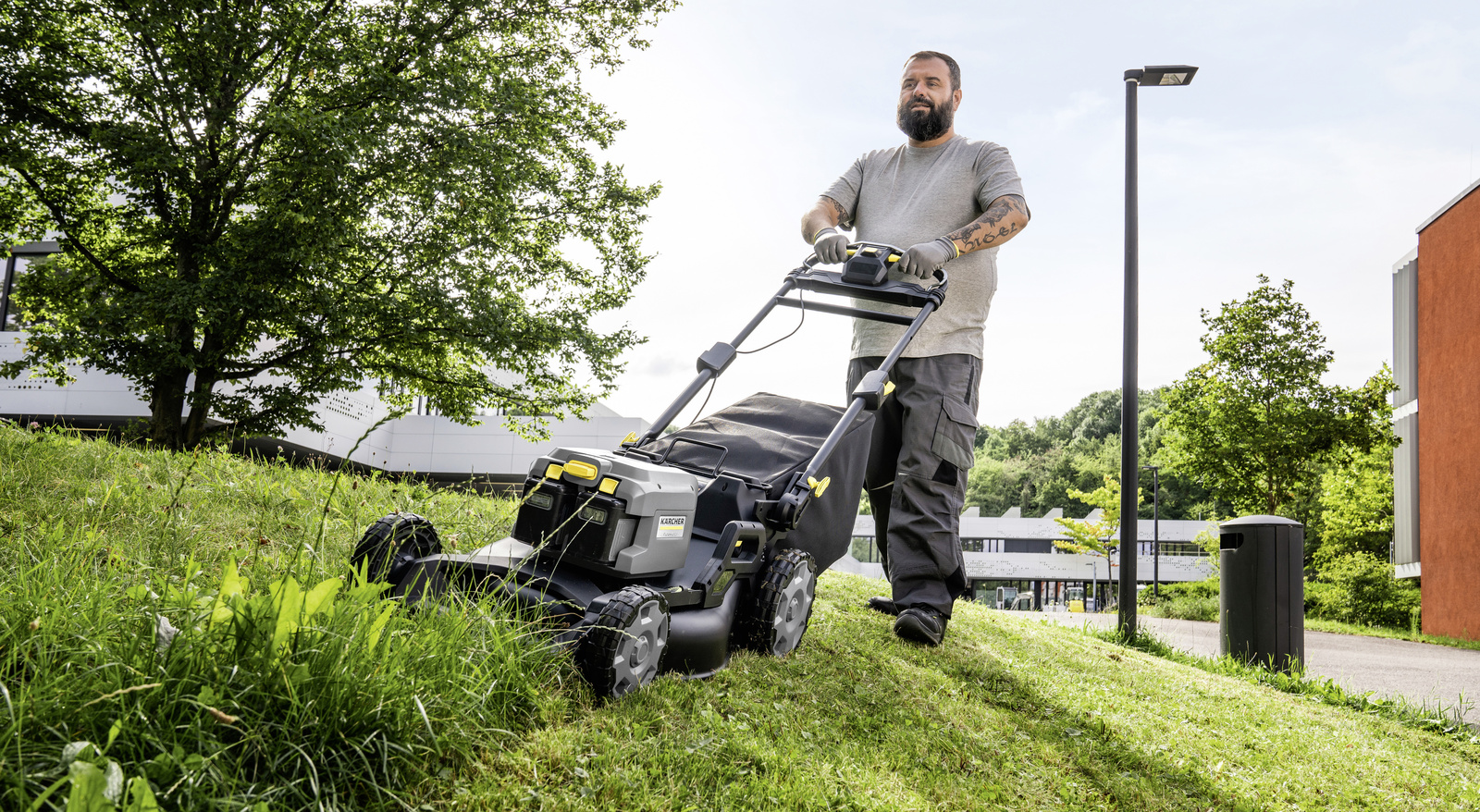
Tip – Do not mow too short:
For lush greenery, it is important not to mow grass too short. The reason for this is that grass stalks grow leaf blades, which transport the moisture from the root to the tip of the stalk. If these are cut off, the grass dies and the area turns brown.

Clearing leaves and snow: from leaf blowers to snow throwers
If leaves need to be removed from the site, leaf blowers or leaf vacuum cleaners can be a more efficient option. Battery-powered models offer the advantage of being quieter and therefore less disruptive to hotel guests. They are also lighter and therefore easier to use. Another added benefit: the higher purchase costs of battery-powered machines are usually amortised quickly, since they do not require any fuel.
Tip – Convenience and efficiency in one:
Handheld machines with carrying straps facilitate fatigue-free work and machines with spring-loaded blowers significantly reduce the vibrations for the user.
Green space maintenance
Mowing lawns, landscaping green spaces, keeping hedges and trees in check: the list of jobs for green space maintenance teams is a long one. Powerful cordless machines are now available on the market for many tasks, from brush cutters to pole-mounted pruners and hedge trimmers. There are also various types of mower designed for implement carriers, sustainable options for weed removal and safety vacuum cleaners to aid in the fight against the oak processionary moths.
In addition, the fleet of machines for cleaning and maintaining outdoor areas should include push sweepers or ride-on models to remove loose dirt from paths and entrances and in multi-storey and open-air car parks. In winter, a small snow thrower with a power output of 26 hp can be a useful tool to keep paths clear.
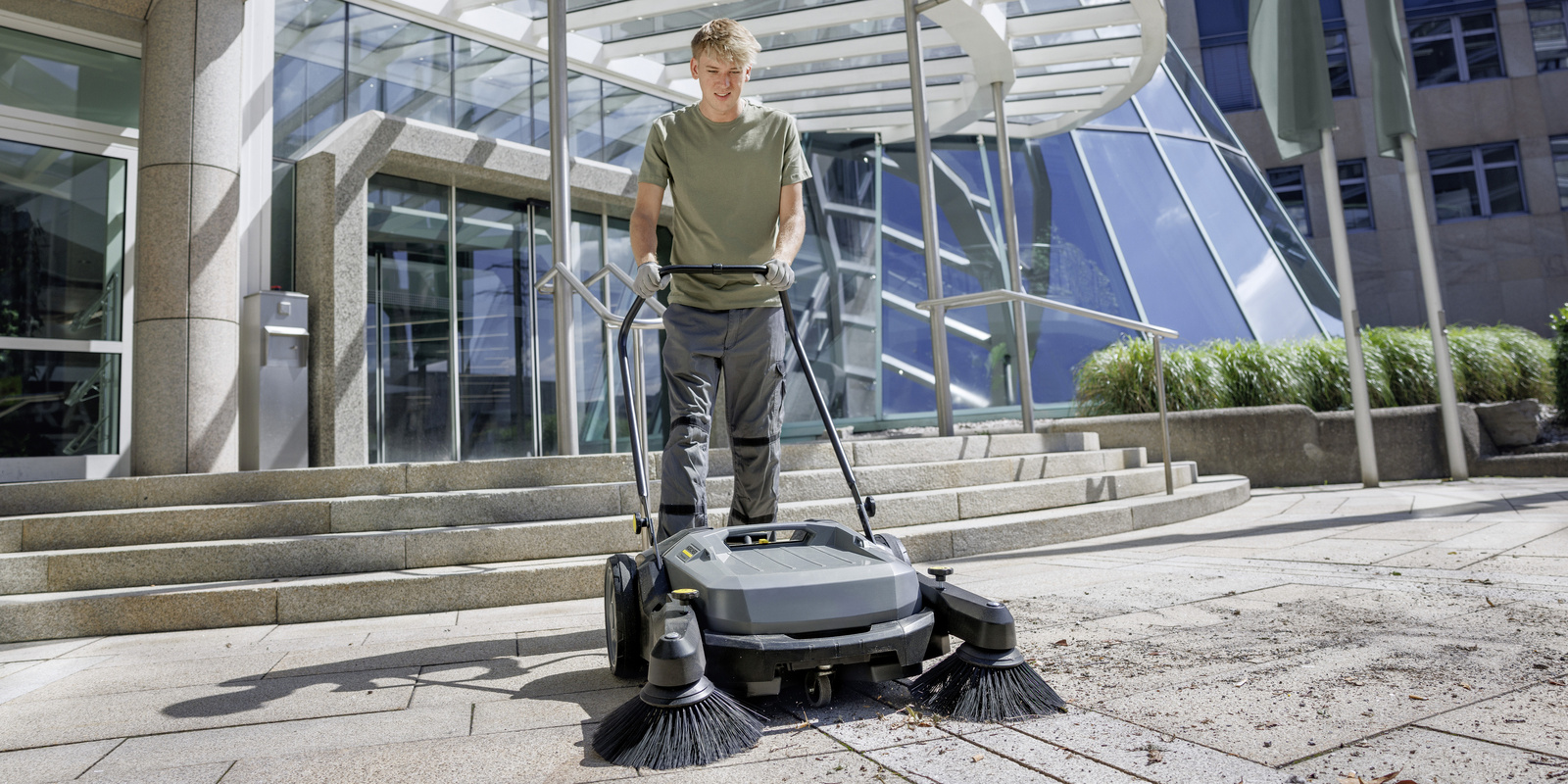

Outdoor facilities
Cleaning outside spaces is an important pillar of building cleaning services. Roads, paths and car parks need to be kept tidy, glass surfaces need to be cleaned, and smaller details, from cigarette bins to handrails on external stairs, must not be overlooked. Plus, the entrance area and dirt trap zone must be cleaned regularly. Well worth the effort: a positive first impression is created, the property value is preserved and the amount of cleaning work required indoors is reduced. A good cleaning concept and the right equipment help you to achieve your goal efficiently.
Winter services
Climate change and the transport revolution present winter service teams with immense challenges, including environmental impacts such as reduced snowfall, the sudden onset of winter weather or black ice. At the same time, cycle path networks are being massively expanded, as more and more road users switch to two wheels for the sake of the environment or to counter rising fuel costs. What methods are available for local authorities, municipal maintenance depots, external service providers and building service contractors to keep working ecologically, economically and ergonomically? Which implement carriers and implements are used for which jobs?
Cleaning car parks
Whether hotel multi-storey car parks, underground car parks at airports and shopping centres or public car parks, guests, passengers and customers are given a first impression the moment they park their vehicle. Cleanliness plays an important role here, because a well-maintained space is not only visually appealing, but also gives people a sense of reassurance. A structured approach to cleaning is therefore very important, with efficient cleaning technology taking the strain off staff and ensuring good results.

Is it all just a facade? Nowhere to hide
Render, natural stone, glass, metal or wood: facades are made from different materials and give each building a unique outward appearance. Regular facade cleaning is necessary to maintain the right appearance and preserve its value. Various professional techniques are available for this, including high-pressure cleaners, sandblasters and dry ice blasters, which can be used depending on the facade material and the type of dirt.
Facade cleaning
With our new system solution comprising brushes, telescopic lances, attachments and adapters, a variety of cleaning methods can be used flexibly for different cleaning tasks. Whether with low, medium or high pressure, or even vacuuming, it's never been easier to clean facades, glass surfaces, solar panels and floors flexibly and thoroughly, even in hard-to-reach areas.
Visible cleanliness in the entrance area
To further reduce the amount of dirt entering the building, dust control mats are a useful addition in the entrance area. Practical, readily available solutions help to remove dust and dirt from the entrance and foyer. A warm welcome: appearances count at reception
Just arrived: the entrance area
The dust control mats in the entrance area can be cleaned effectively with an electric broom or upright brush-type vacuum cleaner; in wet weather conditions, a wet and dry vacuum cleaner is recommended. Foyers are often laid with hard floors, which need to be cleared of coarse, visible dirt multiple times a day using dust mops and vacuum cleaners. A spray mop system removes ingrained dirt quickly and efficiently. Manoeuvrable scrubber dryers give polished stone floors a new shine.

Tip – Check all entrances:
As well as keeping an eye on the main entrance, it is also important to pay attention to cleanliness around any side doors and staff entrances.
Check-in: reception
Reception is the key area when it comes to ensuring a warm welcome for guests. This means not just friendly employees but also an overall impression of a well-maintained space. For example, it may be helpful to have a sanitiser dispenser for guests, depending on regional customs. In addition, all contact surfaces at the reception desk must be cleaned regularly and disinfected as necessary. Cleanliness and hygiene are not only important for guests, but for reception staff too. When changing shifts, all contact surfaces such as telephones, keyboards or card readers should be cleaned and, if necessary, disinfected to keep the workplace clean and tidy for the next colleague.
Varied tasks, suitable technology
Corridors, stairs, lifts and hotel rooms: the cleaning tasks in a hotel are wide-ranging. Having the right equipment and methods in place can help to reach objectives quickly and reduce the pressure on staff.
Looking for a room: corridors and stairs
Once checked in, guests generally go in search of their room. Some large hotels house mile after mile of corridors, which are often fitted with carpets. Carpet vacuum robots or battery-powered carpet vacuum sweepers clean these quickly and efficiently. As in the foyer, dust and dirt can be removed from smooth floor coverings using dust mops, vacuum cleaners and scrubber dryers. The equipment used should be suitable for the size and nature of the area in question.
Battery-powered backpack vacuums are suitable for textile, resilient or stone floor coverings in stairwells. They are convenient to use, with no cable to trip over and no hunting around for a power socket. Mini scrubber dryers are another efficient and ergonomic option for cleaning stairwells.

Tip – Hygiene in the stairwell:
Depending on the time of day, if a stairwell is exposed to a lot of foot traffic, the handrails must be cleaned regularly and disinfected as necessary.
Deep cleaning of carpets
Even with regular maintenance cleaning, intermediate cleaning cannot always produce the desired results, and so there will come a point when more extensive measures are required for a textile floor covering. There are three basic carpet cleaning methods to help keep carpets in use for as long as possible and to refresh their appearance: the spray extraction or the combination methods, which combine spray extraction with the microfibre/yarn pad method or wet shampooing.
Intermediate cleaning of carpets
As attractive, cosy and sound-absorbing as carpets are, even with diligent maintenance cleaning, well-trodden tracks or traces of ingrained dirt appear over time, and dust control technology and spot removal cleaning are no longer enough. Intermediate cleaning can be undertaken to delay the need for the next labour-intensive deep clean. Equipment ranging from iCapsol to microfibre or yarn pads is also suitable for moisture-sensitive floor coverings and surfaces or areas where a short drying time is required, such as hotel lobbies or corridors.
Cleaning stairwells
Stairs can be real design elements, made from shot-peened steel or precious wood. They can be central escape routes or merely neglected pathways between the floors. In each case, cleaning jobs on a stairwell become a challenge because the spatial conditions make for hard work. Why is cleanliness still important? What must be kept in mind for various floor coverings? What are the most common operator errors? Here is an overview.
Cleaning reception areas
The reception area is like a business card for every hotel, car dealership or museum. The place where guests enter an establishment should be somewhere they feel welcome and comfortable – better still, so comfortable that they want to return. But it's not just stylish furnishings and smiling staff which are crucial here; the reception area should also be immaculately clean to win over every visitor, since hygiene plays a key role in places where people are constantly coming and going. Here is an overview of helpful measures to ensure every reception area can show itself at its best.
Supreme cleanliness: the lift
Due to their high frequency of use and relatively confined space, lifts are subject to high standards of cleanliness and hygiene and should be inspected several times a day. A backpack vacuum or an electric broom can be used to clean the floor covering and any stubborn dirt can be removed with a mop. Glazed or mirrored lifts can be cleaned with a handheld surface vacuum cleaner. The advantage: because the machine vacuums the water back up, there is no risk of slipping or contamination from splash water.


Tip – Steam cleaner vs. grease:
To remove greasy marks from glass and metal surfaces, use a steam cleaner with a microfibre or cotton cloth.
Hotel rooms as a place to rest: cleanliness to make you feel good
Having a clean hotel room makes customers feel good not only when they enter it, but also throughout their entire stay. Room cleaning usually takes place under extreme time pressure when hotel guests leave their rooms during the day. A systematic approach is therefore very important to fulfil the objectives efficiently. First, the cleaner conducts a "room check" to determine whether they can clean straight away or whether they need to tidy up before they can get into the room with a vacuum cleaner or cleaning trolley. Next, the windows are either opened fully or the air conditioning is turned to max. to ventilate the room, and the rubbish is taken out.
Start with cleaning the bathroom by first tidying up then applying detergent to the toilet, shower and sink. Leave it to take effect but do not allow it to dry. While the detergent is left to work, the beds in the room can be made or re-made and surfaces can be cleaned of dust with a vacuum cleaner, cloth or feather duster. To prevent dust from entering the bathroom during room cleaning, the bathroom door should remain closed. Next, the areas in the bathroom treated with detergent should be cleaned and rinsed. Then, if necessary, fresh towels should be put out and the soap and toilet paper replenished. Then it's time to clean the remaining surfaces in the room and disinfect contact surfaces as necessary. The cleaner then vacuums the floor in the room; in the case of carpets, this is preferably done with an upright brush-type vacuum cleaner. Finally, set the air conditioning back to room temperature or close the window and spray a room fragrance if necessary.




Tip – Stain removal:
Small stains can be removed from carpeted floors using a stain remover. For this, it is important to work from the outside in so as not to spread the stain around.
Cleaning hotel rooms
Whether business travellers or families on holiday, a clean hotel room is a must for a successful stay. Guests don't want to be greeted by stained carpets or dirty sinks. Once a negative first impression is made, it is hard to convince people otherwise. By contrast, rooms that make you feel good ensure satisfied customers and good recommendation rates. Optimised cleaning management is therefore essential for a hygienic hotel room, especially in terms of maintaining a competitive edge. An overview of the necessary steps for impeccable results.
Full clean
Depending on the building and the type of hotel, there may be additional rooms to clean and maintain – a spa area with saunas and swimming pool or conference suites with function rooms, for instance. It is important not to forget service and staff areas (back of house) too.
The spa area: relaxation without risk
The spa and indoor pool are barefoot zones. To ensure hygiene and eliminate microorganisms, the alternating method is used: this means switching between acidic and alkaline detergents, typically in a cycle of 1 acid then 4 alkaline. Removing mineral and organic dirt in effect removes the breeding ground for unwanted organisms.
Tip – Gentle cleaning methods:
When the alternating method is used, any limestone tiles or joints containing cement must be rinsed with water before using an acidic cleaner. These materials are sensitive to acids and would otherwise be damaged.

Scrubber dryers or orbital single-disc machines are a sustainable solution for maintenance cleaning of floors. They clean quickly and reduce the need for detergents through the use of mechanical force. Tiles with a rough texture scrub up well with the use of high/low roller brushes, while fine-textured tiles are more effectively cleaned using microfibre rollers. Smaller rooms are cleaned with compact battery-powered vacuum cleaners, dust mops or pretreated cloths.
Tip – Steam cleaners for walls, benches and loungers:
To deep clean walls, benches or loungers, a steam cleaner or steam vacuum cleaner is an effective solution, and can be used together with lint-free cloths and a large floor nozzle to clean larger surfaces.

Cleaning spa areas
Operators of swimming pools, thermal baths and spas are facing a number of challenges: sky-rocketing energy prices, a shortage of skilled labour and a broad range of cleaning tasks. At the same time, the window of time available for cleaning is narrow because many jobs can only be done outside of opening hours. To save time and money while keeping cleaning tasks as efficient and environmentally friendly as possible, it is important to have the right technology and processes in place. This often means that the cleaning staff can even dispense with extra disinfection stages, without fungi etc. spreading.
Cleaning changing rooms and toilet facilities
There are many reasons why careful cleaning is required in toilet facilities and washrooms: depending on the setting, toilets, showers and changing rooms in office buildings, production facilities, hotels, restaurants, sports halls or shopping centres are used by many people. This inevitably leads to people's skin coming into contact with various different surfaces that have been touched by practically all users of the facilities – including door handles, taps or toilet flush buttons. Consequently, microorganisms can pass from one person to the next. This must be prevented by means of defined cleaning sequences.
Function rooms, service facilities and staff areas: cleanliness front and back of house
Function rooms and conference rooms present two major challenges for hotel cleaning teams: firstly, these rooms are heavily frequented, which increases the cleaning workload. Secondly, cleaning sometimes has to be done quickly between events. Battery-powered machines are a particularly quiet option, yet are still powerful and manoeuvrable. It is important to have a carefully conceived, customised cleaning system that is tailored exactly to the required cleaning tasks.
Tip – Fresh air indoors:
Air purifiers keep the air indoors fresh at conferences and events for guests' well-being. Different filters can be used to suit requirements.

But cleanliness is just as important behind the scenes: whether in the laundry room, store room, service facilities or staff room – floor coverings and surfaces must be kept clean and cared for using the appropriate methods. This is important for the health and performance of the staff and also stops dirt from these areas entering the hotel.
Hygiene in the hospitality sector
Where food is involved, hygiene is the top priority. With the right equipment, hotel kitchens, cold stores and restaurants can be cleaned efficiently.
A look inside the kitchen: hygiene for walls, equipment and floors
When cleaning wall tiles in the hotel kitchen at the end of the work day, for example, high-pressure cleaners used in combination with foam jets or cup foam lances are an effective option. Here too, it is advisable to switch regularly between acidic and alkaline foam cleaning products to eliminate microorganisms. In the spa area too, any tile joints containing cement must be rinsed with water before using acidic products to protect them from damage.
Machines and kitchen utensils can be cleaned to an extra hygienic standard with a steam cleaner. The 100 °C steam penetrates every crevice and rubber seal that brushes or cloths would struggle to reach. For instance, it can be used to hygienically clean the edges of dishwasher front panels or grooved surfaces.
To prevent slip hazards, most hotel kitchens are fitted with textured floor tiles with studs. Food spills and grease deposits collect between these studs. Surface cleaners with a rotating nozzle bar with slightly offset power nozzles apply the water to the floor at high pressure and loosen the dirt very effectively. As an alternative to surface cleaners, orbital machines or scrubber dryers with rollers can be used to clean floors. The roller machines are much easier to guide and vacuum the dirty water straight back up. Plus, the rollers are practically self-cleaning, since their high rotational speed prevents dirt from sticking to them.

Cleaning kitchens
Wherever food is cooked, there will be stubborn stains. Grease and food residues must be systematically removed in accordance with the HACCP guidelines in order to eliminate breeding grounds for microorganisms. What can high-pressure cleaners, surface cleaners, steam cleaners, scrubbers or scrubber dryers do? What specifics need to be considered when using them? And what should disinfection look like? Here is an overview.

Giving dirt the cold shoulder: clean cold store, whether on or off
Hygiene is also the be-all and end-all in the cold store. There are different cleaning procedures available, depending on whether cleaning has to be carried out while the cooling system is running or switched off. The advantage of maintenance cleaning while the cold store is still switched on is that the cold chain is not interrupted. Pretreated cloths or microfibre mops with good abrasive properties can be used to remove visible dirt. The floor can also be cleaned with a small scrubber dryer. During cleaning, the door of the cold store should remain closed so as not to reduce the cooling performance.
Even with regular maintenance cleaning, there eventually comes a time when a deep clean is needed. Before the refrigeration system is switched off, the products must be moved to another cold store or to a refrigerated container so that the cold chain is not interrupted. Then scrubber dryers, cold water or hot water high-pressure cleaners are used in combination with the right detergent to remove dirt efficiently. Surface cleaners, ideally with a suction function, make a helpful addition to pick up dirt and residual water, which shortens the drying time. For hard-to-reach areas such as rubber seals on doors, steam cleaners are a good choice.
Tip – Ventilation and PPE are crucial:
If the cold store is still in operation, it is important that there is sufficient ventilation and that cleaning staff wear suitable personal protective equipment (PPE), such as a specialist thermal suit, safety goggles and gloves.
Hygiene in the cold store
Low temperatures, high relevance: cold stores can be found in numerous companies – and where they are found, they are generally integral to operational processes. In hotels and restaurants, in industrial production plants or in supermarkets, cold stores provide the correct conditions for storing perishable and temperature-sensitive goods. For the cold store to function perfectly, it requires specialist professional cleaning that reflects the special conditions.
Neat and tidy at the table: clever placement of cleaning equipment
Though hygiene and cleanliness in the kitchen and cold store are out of the guest's eyeline, their first impression is made as soon as they step inside the restaurant. To ensure that arriving guests are met with clean tables, it is advisable to keep cleaning equipment such as pretreated cloths, an electric broom or a mop close to hand. This makes it easy for the staff to clean up properly between diners. Other focal points are the daily deep clean of the dining area and any outside dining areas, as well as ensuring toilet facilities are clean.

Cleaning restaurants
Everyday working life in the hospitality industry is often hectic, with cost pressures high and staff in short supply. Yet guests' expectations are still high. To keep customers satisfied, it's not just good food that matters, but also the ambience. Cleanliness both front of house and back of house is essential to create the right atmosphere. Having the right technology and methods in place can help to complete the varied cleaning tasks efficiently and reduce the pressure on staff.
Carefully conceived concepts
Carefully conceived cleaning concepts are needed to organise cleaning processes efficiently and reduce the workload of cleaning staff. Plus, cleaning robots can take care of monotonous, time-consuming tasks, provided they meet the necessary safety requirements.
The PDIR cleaning concept: preserving value, reducing costs and workload
When floors and surfaces are clean, they not only look good, they also last longer. Concepts such as PDIR can help to achieve cleaning targets as efficiently as possible. It consists of four components that build on each other:
- "P" stands for "preventative" cleaning. This includes ensuring that the outside space and entrance areas are clean so that less dirt enters the hotel in the first place. Clean-off zones with suitable doormats further reduce the amount of dirt that is walked in.
- "D" is for "daily" cleaning. In order to reduce the overall cleaning workload and to avoid spreading dirt further and causing possible damage, soiling should be cleaned up as soon as possible and using appropriate methods.
- "I" stands for "interim", i.e. intermediate cleaning. If daily cleaning is no longer sufficient, more intensive (yet economical) methods must be implemented to keep surfaces and floors clean. This extends their service life and also delays the need for the next deep clean.
- Last but not least: "R" stands for "restorative", i.e. deep cleaning for value preservation. Restorative cleaning procedures are necessary to keep floors and surfaces looking like new. Suitable cleaning systems help to maximise efficiency and save resources.
Efficient and safe: tested and certified robotics
Depending on the size of the hotel, cleaning the floors can take multiple employees several hours. To relieve staff for other duties, these more repetitive, time-consuming tasks can be completed by carpet vacuuming robots and scrubber dryer robots. Models are now available on the market that can be used to quickly clean medium to large areas. Robots that work autonomously control their own docking stations, empty the waste independently, top up consumables and clean several thousand square metres of floorspace every day – without any human input.
Generally speaking, cleaning robots must fulfil strict requirements to be permitted for use in public traffic areas. The robot must be able to navigate safely – even through areas of heavy footfall – which has so far been independently verified for only one model. It is also important that the data from the 2D and 3D cameras is only processed in real time and not stored, and that the entire system is effectively protected against hacker attacks.
The workload can be reduced further still if digital solutions are used to control work processes, to manage staff or even to clean according to demand. The fewer interfaces such a system has, the more smoothly the processes can run.

The workload can be reduced further still if digital solutions are used to control work processes, to manage staff or even to clean according to demand. The fewer interfaces such a system has, the more smoothly the processes can run.
Robotics
People cannot be replaced in building cleaning services, as much of the work can only be done manually. However, due to the growing shortage of skilled labour in many countries, it is becoming increasingly important to reduce time-consuming activities and work efficiently. The use of robotics in building cleaning services is nothing new, but some models now work so autonomously that they represent a clear reduction in the workload for certain applications. Easy operation and high safety standards for working among the general public also mean they can be implemented for a wide range of application scenarios, from supermarkets and hospitals to airports.
Suitable products for your area of application
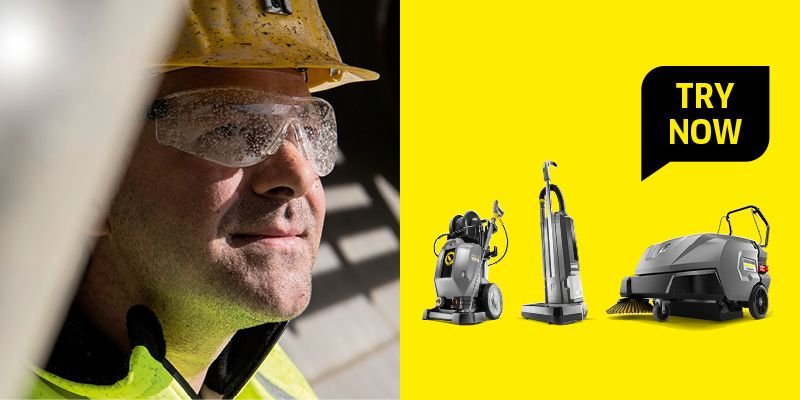
Find a wide range of technology at lightning speed – with the Kärcher Professional product finder
In no time at all, we'll show you the exact Kärcher Professional machine that best suits your specific cleaning task.

